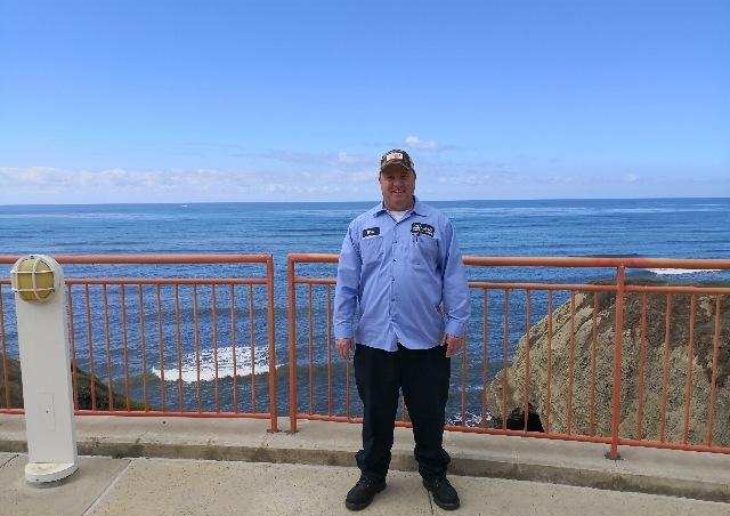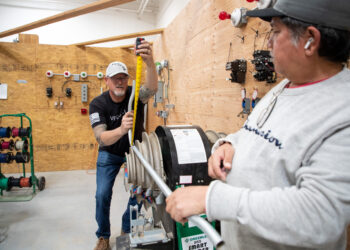
Culinary careers are sizzling again as the hospitality and restaurant industry bounces back from the pandemic and seeks to fill the positions vacated during the COVID-19 downturn. Chaffey College is doing its part to get more cooks in the kitchen.

Michael Majors was tired of clocking in at a job that meant little more than a paycheck. He wanted a career he was passionate about.
Thanks to San Bernardino Valley College’s Water Supply Technology program, Majors, 47, found the training he needed to launch a solid future at the Point Loma Wastewater Treatment Plant in San Diego. He embarked on his new career January 29 as a full-time, plant operator-in-training.
“San Bernardino Valley College prepared me well,” Majors said. “The classes, the internships, the reading — it gave me a solid foundation for what I’m doing now.”
Valley College’s Water Supply Technology program illustrates the impact that career education programs at community colleges throughout California and the Inland Empire are having in equipping students with the skills to thrive in an increasingly complex economy. From Crafton Hills College’s Business Administration and Business Management programs – which is boosting the earnings of participating students by 75 percent – to Mt. San Jacinto’s General Engineering Technology program – which is more than doubling the earnings of participating students, career education is playing a critical role in allowing residents who feel stuck at their present jobs find the tools they need to become firmly ensconced in the middle class.
In fact, a 2017 Georgetown University study, conducted by the Center on Education and the Workforce, found that California leads the nation in the number of good jobs – defined as jobs that pay at least $17 per hour – for people without a bachelor’s degree. The median annual salary for those working in the healthcare industry without a bachelor’s degree was $56,000. For those in manufacturing, it was $60,000. For those in the information, financial and real estate industries, median earnings were at $62,000 annually.
“Not everybody can be a doctor or a lawyer,” said Melita Caldwell-Betties, who oversees the Water Supply Technology program. “But these are important jobs that require a lot of skills and will provide you with a good future.”
That kind of future was appealing to Majors, who grew up in Chula Vista and began working in a steady stream of jobs after graduating from a private Christian high school. Among the stops: a warehouse worker in San Diego, a sales representative for a pet food company in the Bay Area, a shuttle bus driver and concierge for a hotel in San Francisco, a driver for Schwan’s online grocery service, a shift supervisor at a pallet company in Rialto, and a cross-country trucker hauling everything from electronics to potatoes for Swift Transportation.
When his mother passed away, Majors – who was living in Menifee – took time off work to focus on caring for his special-needs son, and with the help of his wife enrolled in the Water Supply Technology program at San Bernardino Valley College.
“I didn’t want to do truck driving anymore and I was tired of going from job to job,” Majors said. “I wanted a career in something that I felt was important to me. When I was in the California Air National Guard, I had a little exposure to the water and wastewater industry as a safety and industrial hygiene specialist. So I decided to check out the program at San Bernardino. The staff was friendly and accommodating, and the instructors were amazing. It was a very comprehensive program that sent me on a path to where I am today. I couldn’t be happier.”
Caldwell-Betties spoke highly of her former protégé. “Michael is what our program is all about,” she said. “He came in here, he paid attention, he did what he needed to do, he took the initiative, and now he has a good job in a good field.”
The Water Supply Technology program provides technical courses in water conservation, water distribution, water treatment, wastewater collection, wastewater treatment, and backflow and cross connection control. It has grown more popular as a graying workforce in the water and wastewater industry enters retirement. The average annual wage of water and wastewater plant operators in San Bernardino and Riverside counties is pushing $66,000 annually, according to the federal Bureau of Labor Statistics. More than 2,100 people are working in the industry in the greater Los Angeles area, and more than 1,000 are employed in Inland Empire.
Thanks to the many partnerships that the San Bernardino Valley program has developed, on-the-job training opportunities are flourishing; Majors landed an internship at the San Bernardino Water Reclamation Plant, just a few miles from the college.
“He learned quite a bit while he was here, he got a lot of hands on experience, and he was able to build on that experience to improve his skills,” said Jennifer Aguirre, who was Majors’ supervisor. “He did quite well.”
After competing 700 hours at the San Bernardino water reclamation plant, Majors landed a job at the Point Loma plant as a trainee.
“I really owe it all to San Bernardino Valley College,” Majors said.
Aguirre feels the same way. She, too, learned the trade through the Water Supply Technology program.
“That program is excellent,” Aguirre said. “I would recommend it to anyone who is interested in a career in this field.”

Culinary careers are sizzling again as the hospitality and restaurant industry bounces back from the pandemic and seeks to fill the positions vacated during the COVID-19 downturn. Chaffey College is doing its part to get more cooks in the kitchen.

Dual Enrollment (DE) is catching on as students and their families recognize the advantages of earning college credit while still working towards high school graduation. But students aren’t the only… Read More – Good News for Community Colleges: Dual Enrollments Are on the Rise

Enrollment in courses not offering credit toward a degree or certificate are outpacing for-credit programs in some states (Fed Communities). And it’s no wonder. With the convenience, minimal time commitment,… Read More – No Credit, No Problem: Noncredit Courses Gain Steam